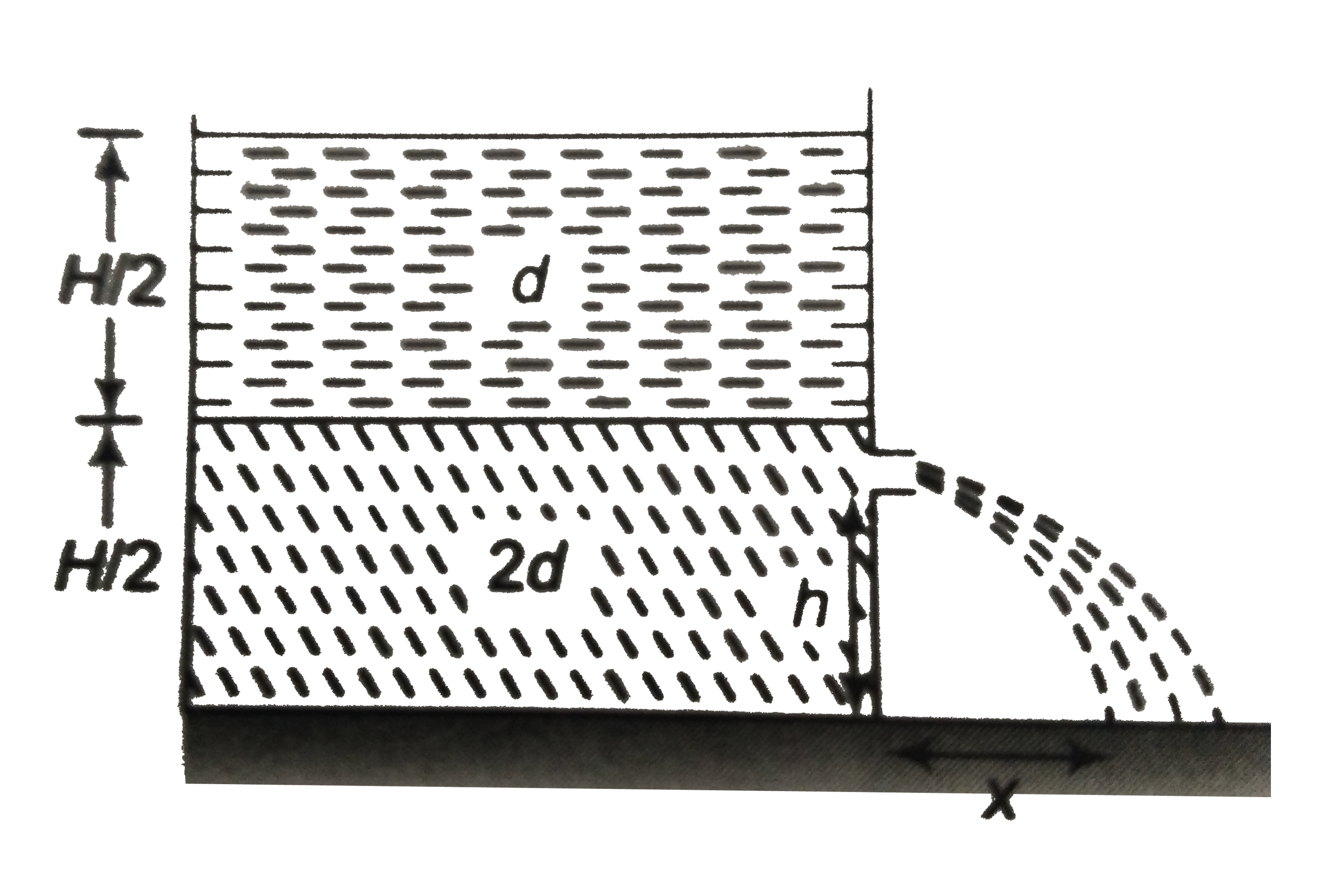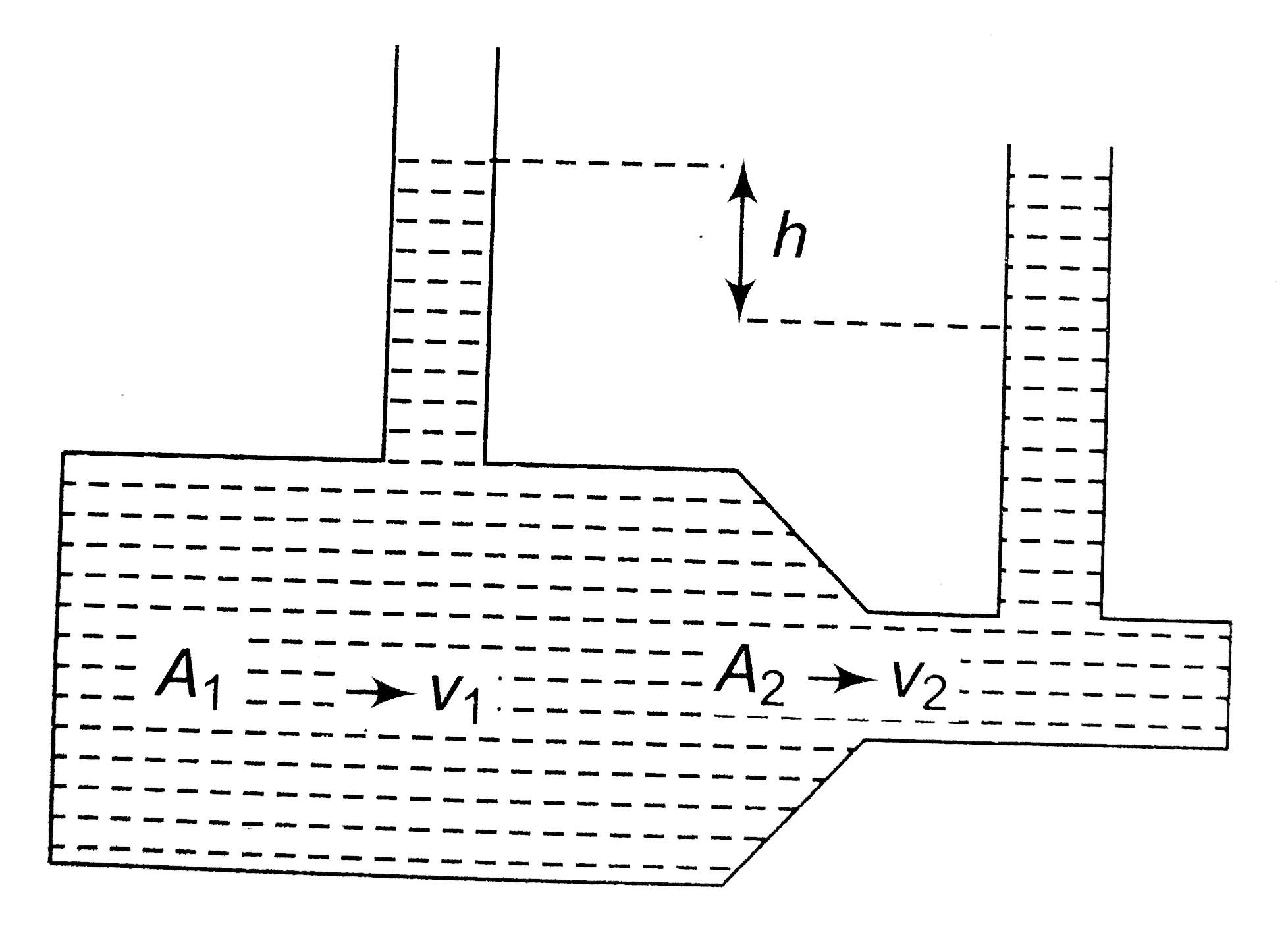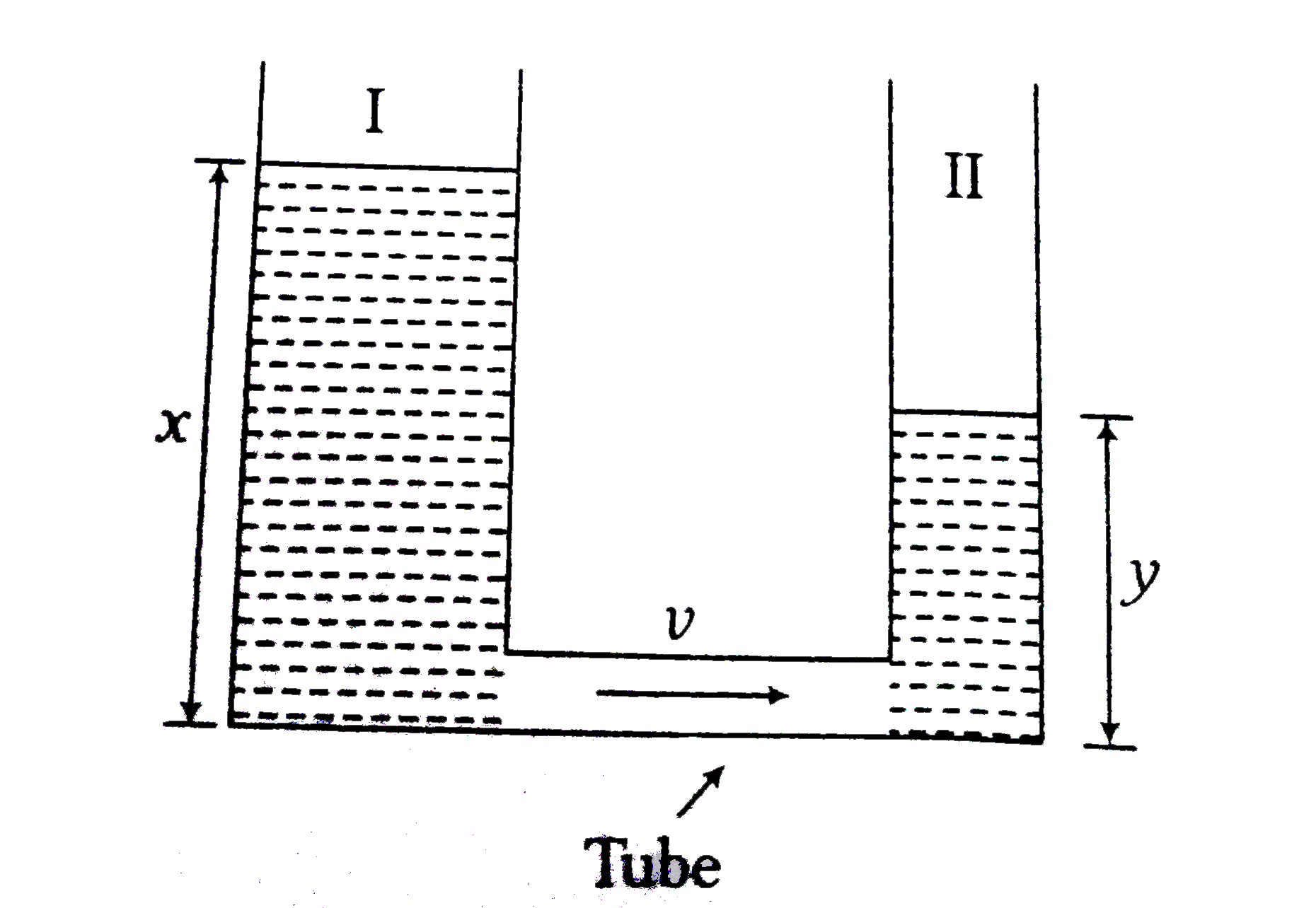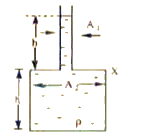_E01_217_Q01.png)
In a movable container shown in figure a liquid of density is filled up to a height h the upper & lower the cross sectional areas are respectively if the liquid leaves out the container through the tube of cross-sectional area then find.
(i). Velocity of liquid coming out.
(ii). Backward acceleration of the container.Solution in Gujrati
The correct Answer is:(i). a=(2gA_(1))/(A_(2))
Step by step video & image solution for In a movable container shown in figure a liquid of density rho is filled up to a height h the upper & lower the cross sectional areas are A_(2)&A_(1) respectively (A_(2)gtgtA_(1)) if the liquid leaves out the container through the tube of cross-sectional area A_(1) then find. (i). Velocity of liquid coming out. (ii). Backward acceleration of the container. by Physics experts to help you in doubts & scoring excellent marks in Class 11 exams.
Updated on:21/07/2023Topper's Solved these Questions
- ELASTICITY, SURFACE TENSION AND FLUID MECHANICSBOOK - ALLEN CHAPTER - ELASTICITY, SURFACE TENSION AND FLUID MECHANICSEXERCISE - Exercise 4 A (Viscosity)
3 Videos
- ELASTICITY, SURFACE TENSION AND FLUID MECHANICSBOOK - ALLEN CHAPTER - ELASTICITY, SURFACE TENSION AND FLUID MECHANICSEXERCISE - Exercise 4 B (Bran storming Subjective Exercise)
11 Videos
- ELASTICITY, SURFACE TENSION AND FLUID MECHANICSBOOK - ALLEN CHAPTER - ELASTICITY, SURFACE TENSION AND FLUID MECHANICSEXERCISE - Exercise 4 A (Fluid Statics)
13 Videos
- CENTRE OF MASSBOOK - ALLEN CHAPTER - CENTRE OF MASSEXERCISE - EXERCISE-V B
19 Videos
- ERROR AND MEASUREMENTBOOK - ALLEN CHAPTER - ERROR AND MEASUREMENTEXERCISE - Part-2(Exercise-2)(B)
22 Videos
Similar Questions
A flask contains glycerine and the other contains water. Both are stirred vigorously and placed on the table. In which flask will the liquid come to rest earlier and why?
View SolutionA container of large uniform cross-sectional area A resting on a horizontal surface, holes two immiscible, non-viscon and incompressible liquids of densities d and 2d each of height H/2 as shown in the figure. The lower density liquid is open to the atmosphere having pressure P0. A homogeneous solid cylinder of length L(L<H/2) and cross-sectional area A/5 is immeresed such that it floats with its axis vertical at the liquid-liquid interface with length L/4 in the denser liquid,

The cylinder is then removed and the original arrangement is restroed. a tiny hole of area s(s<<A) is punched on the vertical side of the container at a height h(h<H/2). As a result of this, liquid starts flowing out of the hole with a range x on the horizontal surface.
The total pressure with cylinder, at the bottom of the container is
View SolutionA hydraulic automobile lift is designed to lift cars with a maximum mass of 3000Kg. The area of cross section of the piston carrying the load is 425cm2. What maximum pressures would the smaller piston have to bear?
View SolutionTwo particles of masses m1 and m2 in projectile motion have velocities →v1 and →v2 , respectively , at time t=0. They collide at time t0. Their velocities become →v'1 and →v'2 at time 2t0 while still moving in air. The value of ∣∣∣(m1→v'1+m2→v'2)−(m1→v1+m2→v2)∣∣∣
View SolutionA cube has a side of length 1.2×10−2m. Calculate its volume.
View SolutionA cylindrical vessel contains a liquid of density rho up to height h . The liquid is closed by a piston of mass m and area of cross section A . There is a small hole at the bottom of the vessel. The speed v with which the liquid comes out of the hole is
View SolutionA liquid flows through a horizontal tube. The velocities of the liquid in the two sections, which have areas of cross section A_(1) and A_(2) are v_(1) and v_(2) respectively. The difference in the levels of the liquid in the two vertical tubes is h . Then
View SolutionA liquid flows through a horizontal tube as shown in figure. The velocities of the liquid in the two sections, which have areas of cross-section A1 and A2 and v1 and v2 respectively. The difference in the levels of the liquid in the two vertical tubes is h, then

View SolutionA portion of a tube is shown in the figure. Fluid is flowing from cross-section area A1 to A2. The two cross-sections are at distance 'l' from each other. The velocity of the fluid at section A2 is √gl2. If the pressures at A1 & A2 are same, then the angle made by the tube with the horizontal will be:

View SolutionFrom a horizontal tube with area of cross-section A_(1) and A_(2) as shosn in fiugre liquid is flowing in the level of the liauid in the two veritcal tunes is h.
View SolutionIf cross- sectional area of limb I is A1 and that of limb II is A2 then velocity of the liquid in the tube will be, (cross- sectional area of tube is very small)

View SolutionA liquid flows through a pipe of non-uniform cross-section. If A_(1) and A_(2) are the cross-sectional areas of the pipe at two points, the ratio of velocities of the liquid at these points will be
View Solutiona1 প্রস্থছেদের ক্ষেত্রফল সম্পন্ন চোঙাকৃতি একটি জলাধার h উচ্চতা পর্যন্ত জলপুর্ণ। জলাধারের তলদেশেa2ক্ষেত্রফলের একটি ছিদ্র আছে।প্রদত্ত যে,a1=3a2।
জলাধারের জলতল হ্রাসের প্রাথমিক বেগ হল
View Solutiona_(1) A reservoir filled with cross-sectional area is waterlogged to a height of h. At the bottom of the reservoir a_(2) There is a hole in the area. a_(1)=3a_(2) The initial velocity of water coming out through the hole is
View SolutionThe vessels shown in the figure has two sections of areas of cross - section A1andA2. A liquid of density ρ fills both the sections, up to a height h is each. Neglect atmospheric pressure.

a) The pressure at the base of the vessel is 2hρg.
b) The force exerted by the liquid on the base of the vessel is 2hρgA2.
c) The weight of the liquid is <2hρgA2.
d) The walls of the vessels at the level X exert a downward force hρg(A2−A1) on the liquid.
View SolutionThe vessel shown in the figure has two sections of area sof cross section A1 and A2. A liquid of density ρ fills both the sections, up to a height h in each. Neglect atmoispheric pressure.

a. The pressure at the base of the vessel is 2hρg.
b. The force exerted by the liquid on the base of the vessel is 2hρgA2.
c. The weight of the liquid is <2hρgA2.
d. The walls of the vessel at the vessel X exert a downward force hρg(A2−A1) on the liquid.
View Solution
